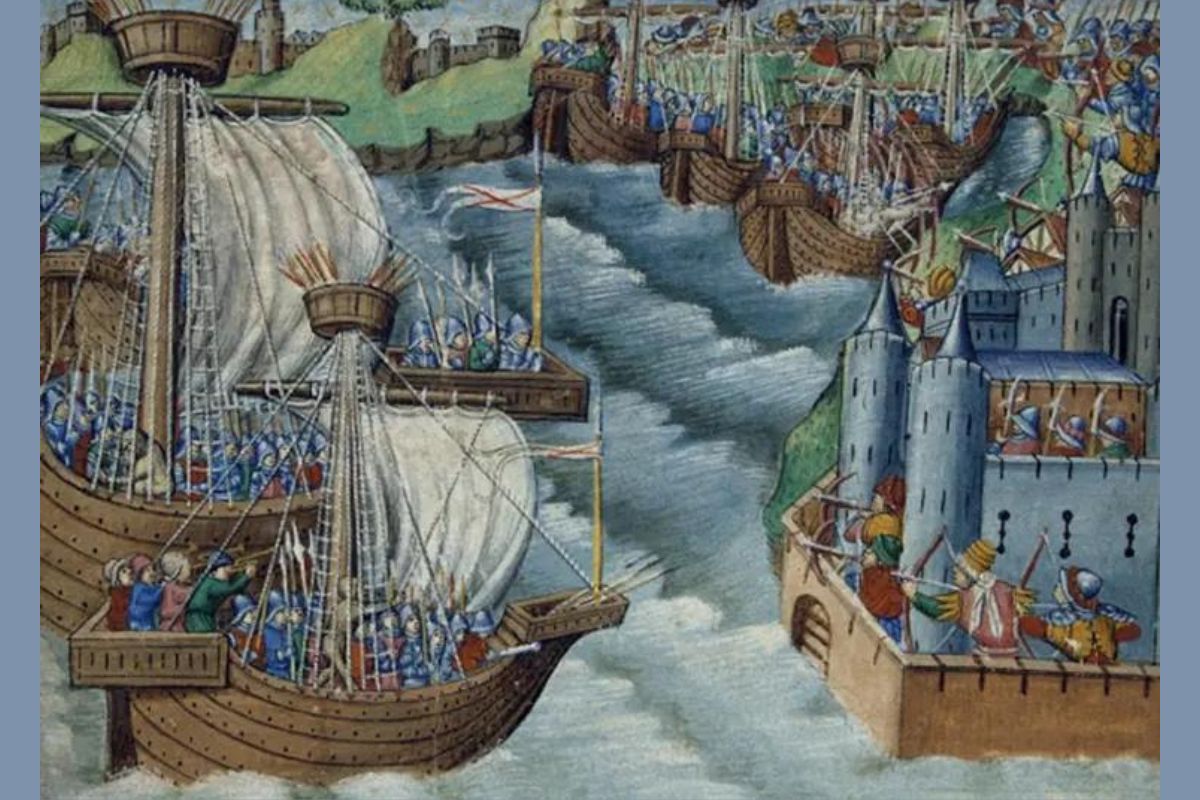


In a momentous proclamation that reverberates through the corridors of time, Historic England, the esteemed custodian of Britain’s heritage, unveiled a discovery of profound historical significance. The heritage group announced on Monday the unearthing of a timber ship, believed to be the 600-year-old wreckage of a crucial vessel from the illustrious fleet of King Henry V.
Nestled in the mud of a river in southern England near Southampton, this remarkable find is thought to be none other than the Holigost, or “Holy Ghost,” a ship that played a pivotal role in shaping the course of European history during the early 15th century, amid the tumult of the Hundred Years’ War.
Table of Contents
ToggleThe Holigost emerges from the annals of medieval lore as a vessel of renowned valor and indomitable spirit. Believed to have participated in two decisive sea battles, this ship stood as a stalwart guardian of English sovereignty, navigating the treacherous waters of conflict with unwavering resolve. Its presence on the battlefield was emblematic of King Henry V’s ambitious vision to expand his dominion across the English Channel, a testament to the maritime prowess of the English fleet during a tumultuous era of warfare and conquest.
The timing of this revelation is serendipitous, occurring mere days before the commemoration of the 600th anniversary of the Battle of Agincourt. On October 25, 1415, amidst the fields of northern France, King Henry V led his valiant troops to a resounding victory against the French forces, defying overwhelming odds and etching his name into the annals of legend. Shakespeare immortalized this historic triumph in his iconic play “Henry V,” immortalizing Agincourt as a symbol of English valor and resilience. The discovery of the Holigost serves as a poignant reminder of the sacrifices made and the battles fought in the pursuit of glory and conquest.
The preservation of the Holigost represents a solemn commitment to honoring and commemorating the legacy of King Henry V and his illustrious fleet. Historic England has pledged to ensure the safe retrieval of the wreck, followed by meticulous conservation efforts to safeguard its fragile remnants.
Once authenticated and verified, the ship will find its final sanctuary in Portsmouth, where it will serve as a tangible link to the past and a testament to the ingenuity of medieval shipbuilders. Through the preservation of this historic relic, future generations will have the opportunity to connect with the rich tapestry of England’s maritime heritage and pay homage to the gallant souls who sailed aboard the Holigost.
Beyond its intrinsic historical significance, the discovery of the Holigost underscores the enduring allure of archaeology and the relentless quest to unearth humanity’s collective heritage. With each excavation, archaeologists peel back the layers of time, offering tantalizing glimpses into bygone eras and enriching our understanding of the human experience. The Holigost, with its weathered timbers and silent testament to centuries past, beckons us on a voyage of exploration, urging us to contemplate the resilience and fortitude of those who came before us. This profound connection to the past inspires us to cherish our heritage and preserve it for generations to come.
The unearthing of the Holigost opens a gateway to further exploration and discovery, igniting the imaginations of historians and archaeologists alike. As scholars delve deeper into the archives, they seek to unravel the mysteries surrounding King Henry V’s naval campaigns and the broader context of medieval maritime warfare. Through meticulous research and exploration, future expeditions may unearth additional wrecks or artifacts, shedding new light on this pivotal period in history and enriching our understanding of the challenges and triumphs faced by our forebears. This journey into the past promises to reveal untold stories and deepen our appreciation for the complexities of medieval naval warfare.
Historic England’s recent revelation of the 600-year-old wreckage of King Henry V’s ship, the Holigost, near Southampton resonates with profound historical significance. Believed to have played a crucial role in pivotal naval battles during the early 15th century, this discovery offers a glimpse into England’s maritime legacy. As we approach the 600th anniversary of the Battle of Agincourt, where Henry V secured a resounding victory, the timing of this find adds a poignant layer to its significance.
The Holigost symbolizes valor and resilience, reflecting Henry V’s ambitious vision for expansion and sovereignty. Historic England’s commitment to preserving this relic ensures that future generations can connect with England’s maritime heritage. This discovery serves as a testament to the enduring allure of archaeology and the importance of understanding our collective past. As we reflect on Holigost’s legacy, we are reminded of the indomitable spirit that drives us to explore and preserve history’s treasures.

